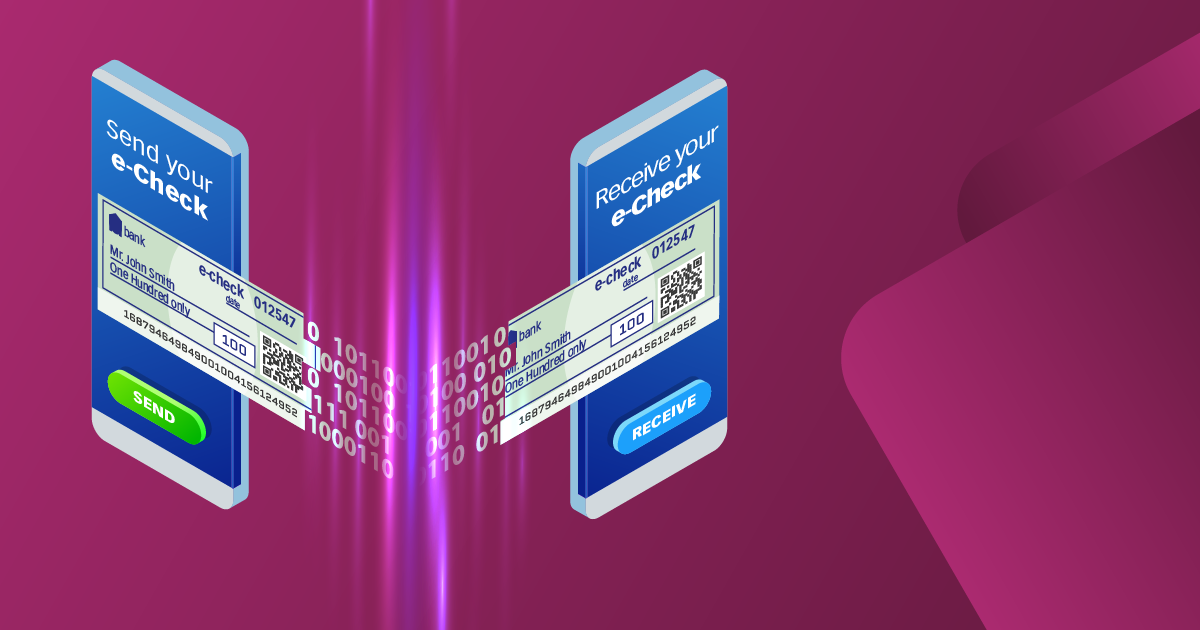
June 20, 2024
The Future is E: The Prospect of Checks

Checks have long been a cornerstone of financial transactions, evolving from ancient civilizations to modern economies. Their history is marked by innovation and adaptation, but as we enter the digital age, traditional paper-based checks face both challenges and opportunities. This article delves into the transformative potential of electronic checks (e-checks) and their pivotal role in the future of banking.
The Historical Significance of Checks
Checks trace their origins back to early societies, where primitive forms of payment instruments were used to facilitate trade and commerce. However, it was Nicholas Vanacker's documented check in 1659[1] that marked a significant milestone in the evolution of checks. This surviving document serves as tangible evidence of the birth of the modern check as we know it today. Despite centuries of technological advancements, checks have maintained their relevance in financial transactions, serving as a trusted method of payment for individuals and businesses alike.
The Rise of Electronic Transactions
Over recent years, the banking sector has experienced a significant shift propelled by the surge of digital payments and emerging technologies. The rise of online banking, mobile payments and contactless transactions has reshaped the landscape of financial transactions. Central bank digital currencies (CBDCs) have emerged as a potential replacement for traditional fiat currencies, raising questions about the future of paper-based checks in a digital economy. The COVID-19 pandemic further accelerated the shift towards electronic payments, highlighting the need for more efficient and resilient payment methods.
The Transition to E-checks
As the world moves towards a cashless society, the traditional paper-based check faces increased scrutiny. E-checks offer a compelling solution for streamlining payment processes, reducing costs and enhancing security. By digitizing the components of traditional checks, including payment information and authorization signatures, e-checks eliminate the need for paper-based transactions, resulting in significant cost savings for both businesses and financial institutions. Advances in cryptography technology have made digital signatures a secure and legally binding method of authorization, further enhancing the credibility of e-checks as a viable payment option.
The Role of Digital IDs
Digital identities are poised to play a critical role in the future of electronic transactions. By incorporating biometric and cryptographic attributes, digital IDs serve not only as a means of identification but also as authorization mechanisms for financial transactions. Digital signatures, facilitated by digital IDs, offer a secure and efficient method of authorizing e-check and other electronic payments. Standardizing and legalizing digital signatures will be essential for widespread acceptance and adoption of e-check in the banking sector.
The Future Outlook
Amidst the digital revolution, the future of checks lies in adopting electronic formats. E-checks offer a compelling solution for modernizing payment processes. Generational preferences, technological advancements and regulatory frameworks will shape the adoption and evolution of e-checks in the coming years. By embracing digital innovation and leveraging emerging technologies, the banking sector can pave the way for a more efficient and inclusive financial ecosystem.
Conclusion
As we navigate the digital revolution, the future of checks undergoes a profound transformation towards electronic formats. While e-checks indeed offer streamlined processes, reduced costs and enhanced security in financial transactions, their significance extends beyond these benefits. By integrating digital identities and embracing technological advancements, the banking sector will not only revolutionize its operational landscape but also foster greater financial inclusion. Embracing the evolution of checks not only marks a pivotal moment in banking innovation but also signifies a shift toward a more accessible and equitable financial future.
References:
- Bank of England Museum, Early banknotes, 2023
Related Products




